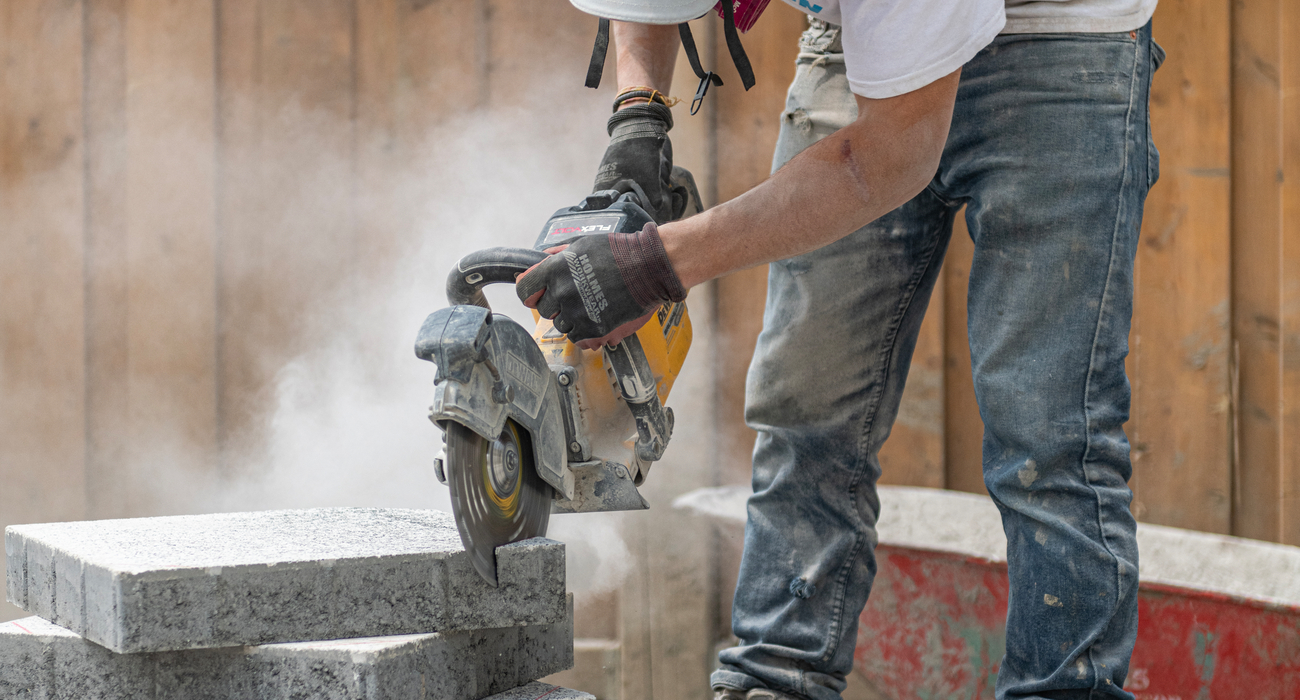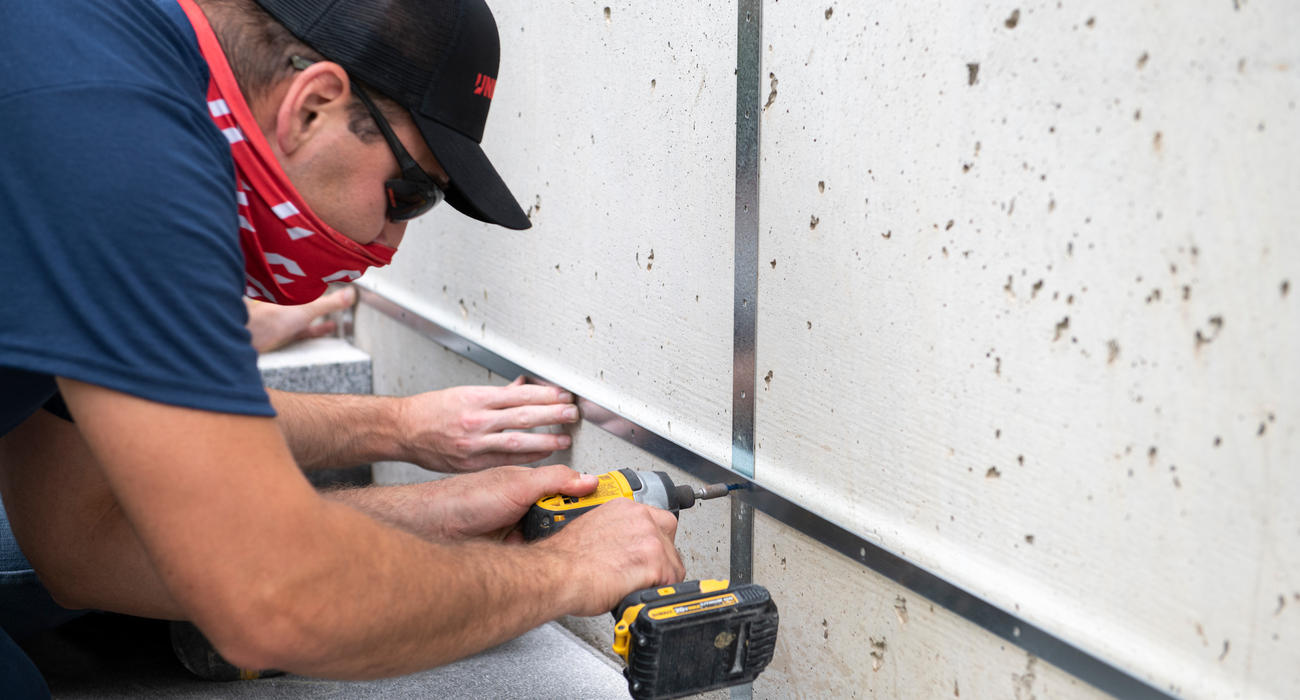The Benefits of Switching to Battery-Powered Hardscape Equipment for Landscape Contractors

After years of relying on gas-powered machinery, the landscape industry is experiencing a significant shift as battery-powered hardscape equipment gains traction. As a contractor, understanding this transition and the technology behind it is key to maintaining a competitive edge in an evolving market. In this article, we will break down the benefits of switching to battery-powered tools, best practices, and how to choose the right equipment for your business.
How Market Trends Have Encouraged the Move to Electric
In regions like California and the Pacific Northwest, local legislation is already driving this change. Several states have introduced bans or limitations on gas-powered equipment, particularly for commercial use, which means battery-powered tools are becoming essential for compliance. Across the industry, there’s a growing demand for tools that offer cleaner, quieter, and more efficient alternatives to traditional gas-powered equipment. A 2024 report in Lawn & Landscape outlined how a number of landscaping businesses are adopting battery-powered tools due to increased client demand and changing environmental regulations. Stihl, a leading manufacturer of chainsaws and outdoor power equipment, has committed to increasing its share of its sales of battery-operated products to 80% by 2035. Similarly, DeWalt has been expanding its battery-powered outdoor tools with the DeWalt POWERSHIFT™ system to reduce reliance on gas and promote quieter operation. John Deere is also making moves by introducing electric “E-Gator” utility vehicles and new residential mowers, emphasizing sustainability and high performance.
Understanding Lithium-Ion Batteries
At the heart of battery-powered hardscape equipment is lithium-ion technology. Unlike older battery types, for instance, Nickel-cadmium (NiCad), lithium-ion batteries offer several advantages that make them ideal for hardscaping equipment:
- Rechargeable and long-lasting: These batteries hold a charge much longer than traditional batteries.
- Higher energy density: More power in a smaller, lighter package.
- No memory concerns: Lithium-ion batteries can be recharged without worrying about “memory effect” diminishing their capacity.
While lithium-ion batteries have a higher upfront cost, their longevity, and efficiency more than make up for it.
As with all technology, lithium batteries do require proper handling to ensure safety and performance. Though rare, lithium-ion batteries can catch fire if exposed to extreme temperatures, are overcharged, or damaged, leading to thermal runaway. Therefore, following proper storage and charging guidelines is crucial to maximizing their safety and lifespan.
Debunking Common Myths about Battery-Powered Hardscape Equipment
Cost vs. Long-term Savings
While the initial investment in battery-powered equipment may be higher than that for gas-powered alternatives, it’s essential to consider long-term savings. Battery tools often have lower maintenance costs, require less fuel, and incur fewer emissions-related expenses, making them a cost-effective solution. For instance, studies have shown that while the upfront cost may be significant, the reduced operating costs and increased longevity can lead to substantial savings over the lifespan of the equipment.
Weight and Power
Another common myth is that battery-powered equipment lacks the power of gas-powered options. However, advancements in battery technology have significantly boosted the performance of battery-powered tools. Improvements in lithium-ion batteries have allowed many battery-powered tools to achieve performance levels comparable to or even surpass gas-powered options. These tools are also lighter and more ergonomic, reducing fatigue and making them easier to handle for extended periods, which is especially valuable for contractors working long hours.
Run Time and Charging
Concerns regarding run time and charging efficiency are prevalent among contractors, but recent innovations in battery design have significantly improved these aspects. Many battery-powered tools now feature fast-charging capabilities, minimizing downtime and ensuring that equipment is ready for use when needed. For instance, advancements like Milwaukee’s Rapid Charge Technology allow batteries to charge up to 80% in just 35 minutes, enabling contractors to get back to work quickly. Similarly, DeWalt’s FlexVolt battery system automatically changes voltage when you change tools, optimizing performance for various applications. This advancement enables contractors to complete their projects more efficiently without compromising performance.

Choosing the Right Voltage
Contractors often wonder how to choose the right battery-powered equipment based on voltage. While higher voltage suggests more power, it doesn’t always guarantee better performance. It’s crucial to balance weight, runtime, and overall efficiency. Key to this is the motor’s efficiency and a well-designed Battery Management System (BMS), which manages charge cycles and prevents overheating. This ensures consistent power during long jobs and extends battery life.
Differences Between Amp Hour (Ah) and Watt Hour (Wh)
When evaluating equipment, understanding battery capacity is key. Battery capacity is usually measured in Amp Hours (Ah) and Watt Hours (Wh):
- Amp Hours (Ah) measures the battery’s current capacity.
- Watt Hours (Wh) (calculated by multiplying volts by amp hours) measures the total energy stored.
The higher the “Wh”, the longer the equipment will run on a single charge, making this an important factor when choosing tools for your projects.
Commercial vs. Consumer Equipment
It’s important to understand the difference between commercial-grade and consumer-grade battery-powered equipment. Commercial-grade battery-powered tools are built with high-quality components, such as brushless motors that enhance performance and require less maintenance, leading to longer runtimes on the job compared to brushed motors. Additionally, materials such as copper and silver are often utilized in these tools for improved conductivity, further boosting their efficiency. Robust Battery Management Systems further improve reliability by regulating battery usage and preventing overheating during extended use. Adopting battery-powered equipment not only aligns with growing sustainability efforts but can also save time and money in the long run.

Battery Recycling Initiatives
As the adoption of battery-powered equipment increases, so does the importance of responsible battery disposal and recycling.
One significant resource is Call2Recycle, a national program that provides information on battery recycling locations across Canada and the United States. This initiative makes it easy for contractors and homeowners to properly dispose of used batteries, ensuring they are recycled rather than ending up in landfills.
In addition to the general recycling program, several states are launching high-energy recycling initiatives that focus on the safe disposal of lithium-ion batteries used in commercial applications, such as California, Washington, and Oregon. These programs not only help protect the environment but also promote awareness about the proper handling and recycling of battery-powered equipment.
Best Practices for Battery Care
Maintaining your batteries is essential for extending their life and ensuring peak performance. Here are some tips to keep your batteries in top shape:
- Keep terminals clean and free of debris.
- Store in a cool, dry place.
- If a battery overheats or shows damage, stop using it and contact the manufacturer.
As battery-powered equipment becomes more prominent in hardscaping, it’s important to stay updated on the latest technology to maximize efficiency and reduce environmental impact. Lithium-ion technology offers clear advantages, including longer runtimes and better energy efficiency, but it requires careful selection and maintenance to ensure it meets the needs of your projects.
Unilock shares this commitment to sustainability and has embarked on a journey to become carbon-neutral through initiatives designed to make our products and practices more eco-friendly. Learn more about our sustainable approach on our Sustainability page.







